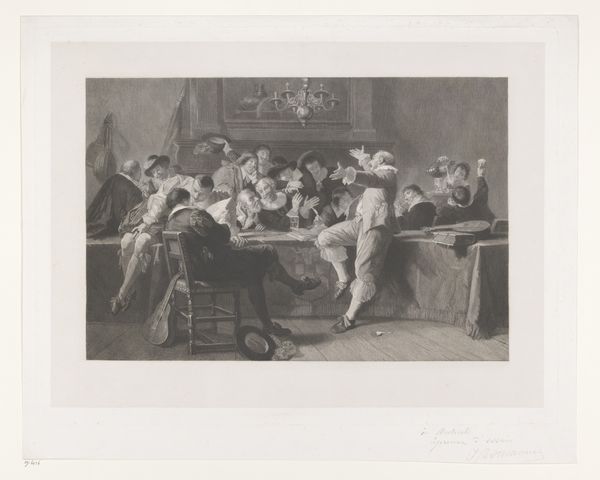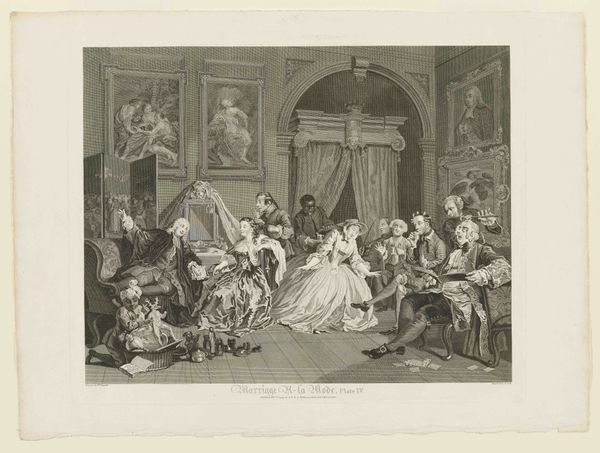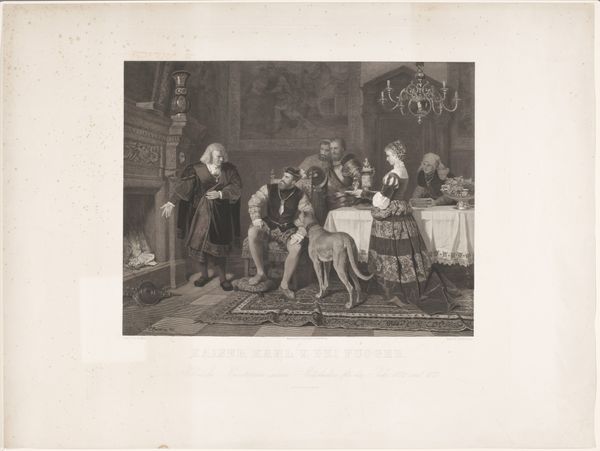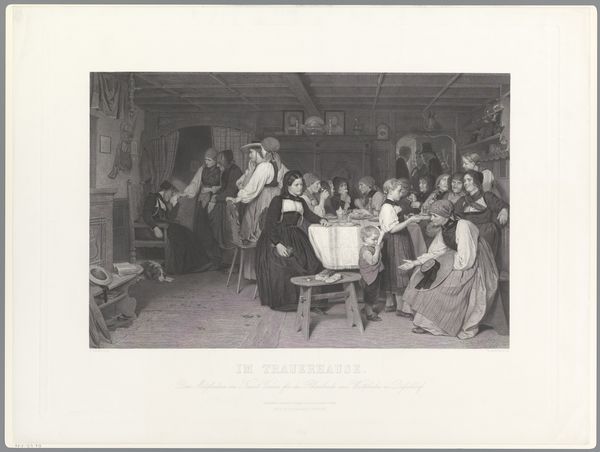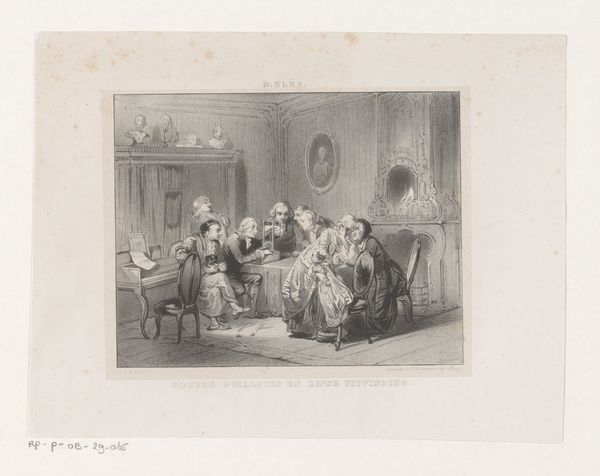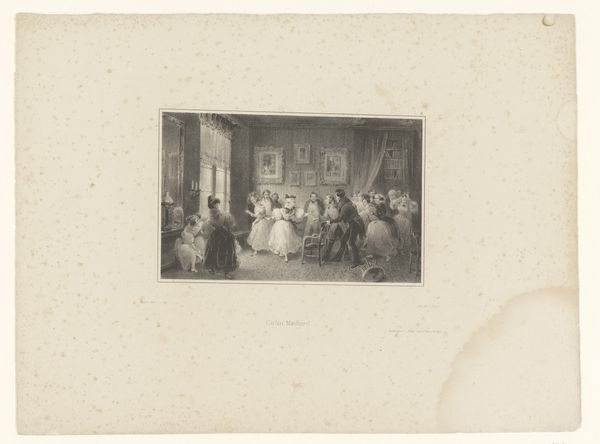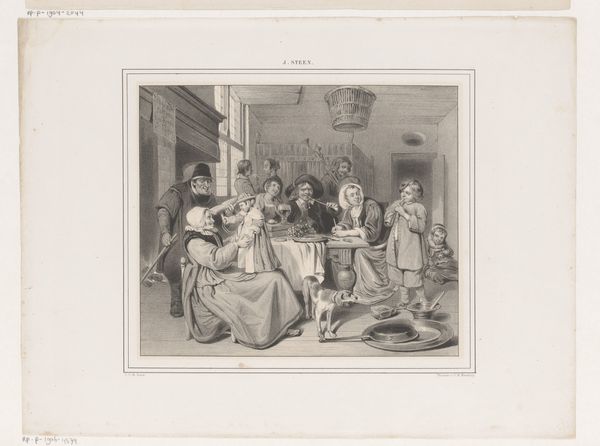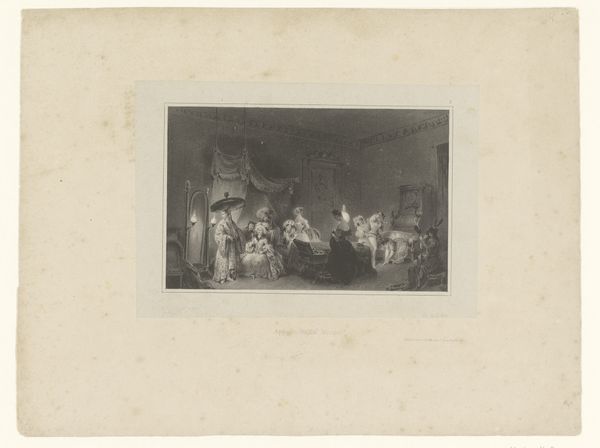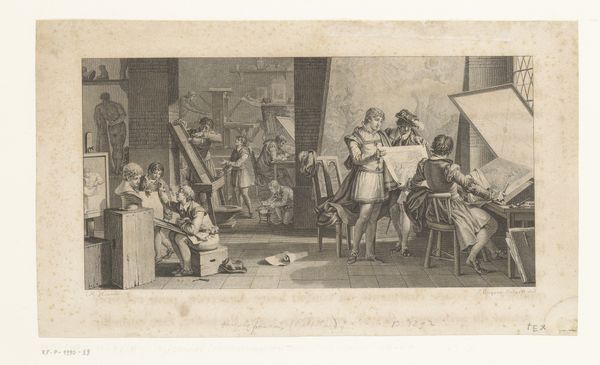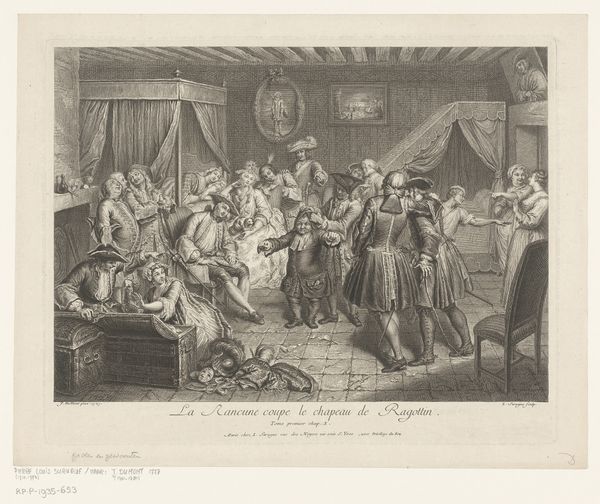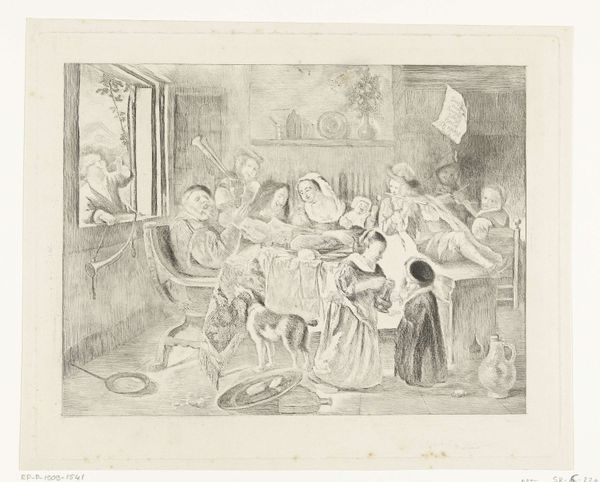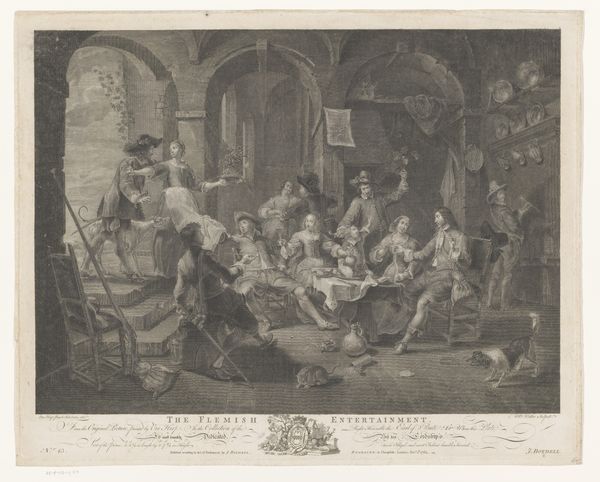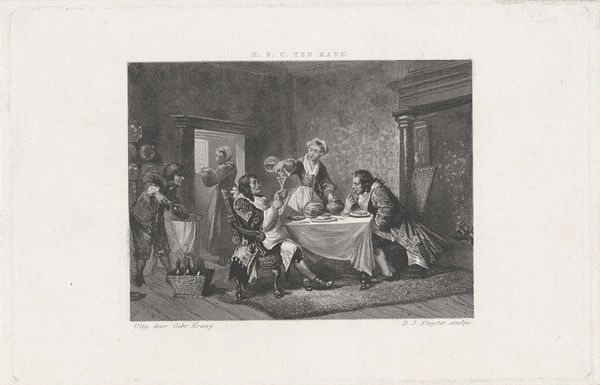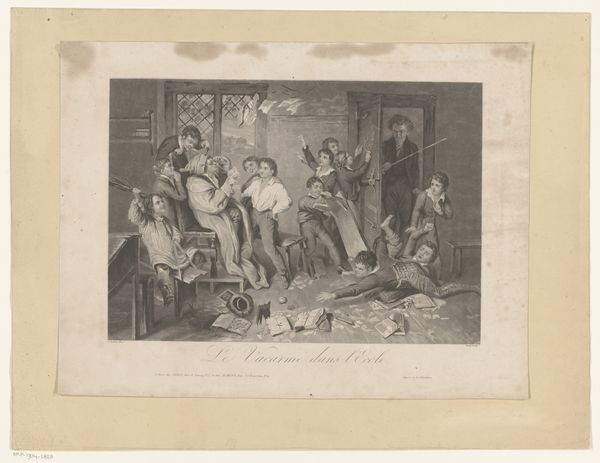
Dimensions: height 432 mm, width 613 mm
Copyright: Rijks Museum: Open Domain
Curator: It's hard not to get swept up in the boisterous energy of this engraving, titled "Jolig gezelschap van mannen in zeventiende-eeuwse kleding" which translates to "Jolly company of men in seventeenth-century clothing." Created by Joseph Arnold Demannez sometime between 1836 and 1902, it presents us with a glimpse into what seems like a very lively gathering. Editor: Lively is certainly one word for it! My initial impression is one of pure exuberance – a release of pent-up social energy perhaps. The composition, though somewhat chaotic, successfully conveys a sense of communal celebration, tinged with something bordering on the unruly. Curator: Exactly! This "genre-painting," as it's sometimes categorized, draws heavily from the visual language of the Baroque era. The clothing, the interior setting, even the rather theatrical gestures... They all suggest a deliberate invocation of that earlier period's aesthetics. And this return to history seems purposeful in a print of its age. Editor: The cultural memory is quite pronounced; history as theatre. I notice the strategic placement of certain symbolic elements, a lute casually leaning against a chair, a hat dropped on the floor - are we to read them as metaphors for abandon? Perhaps a temporary shedding of societal constraint, if only for the duration of the party? Curator: It is very compelling that you noticed those very motifs! Those recurring emblems invite us to think deeper about shifting societal norms during the baroque period and how those emblems take on meaning during Demannez's time period, too! Don't you wonder who those people are celebrating and for what reasons? Is there more than a genre scene? Is there some political motivation during Demanez time period, too? Editor: Indeed. I think this piece highlights the role art plays in shaping historical narratives. What exactly are the institutions which displayed Demannez art during his lifetime communicating about an imaginary baroque scene for a public viewer? Was there something at stake within this projection that required certain imagery in particular for him and his contemporary audiences? Curator: And the material – the stark contrast created by the engraving technique contributes to the drama. But more than just visual spectacle, the artist captures a very specific mood of shared merriment. Editor: It truly is a fascinating capture of a fleeting moment—a boisterous echo from the past filtered through the sensibilities of the nineteenth century. I am curious how we perceive those images today and if they carry with them any personal continuity within each of us. Curator: Indeed. It provides a very captivating example of how visual art acts as both a reflection of its own time and a window into the echoes of prior centuries.
Comments
No comments
Be the first to comment and join the conversation on the ultimate creative platform.
